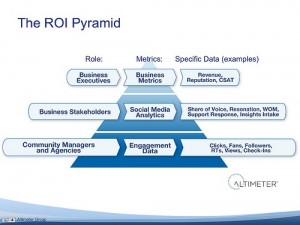In this day and age, many unsolicited sales calls go unanswered. Modern sales and  marketing professionals are up against savvy buyers who have easy access to detailed product information on the Web and through Social Networks.
marketing professionals are up against savvy buyers who have easy access to detailed product information on the Web and through Social Networks.
Everyone is connected to the latest information. Buyers today are pretty good at blocking your calls and emails, through Caller ID, email spam filters and they can easily send your email to its grave with a simple click on the delete button. But since so many sales people continue to follow this old school approach, it makes me wonder if in their minds they are saying to themselves…”I just know that I can get through all these defense mechanisms and land that one magical deal.”
Can they? Based on what clients are telling me, I believe the answer is no.
This question was the subject of online consultancy Software Advice’s latest Google+ Debate, “Does Cold Calling Still Work?” The panel, moderated by Derek Singleton, brought together inbound marketing and inside sales experts to debate three questions:
- Given how the Web has empowered B2B buyers, is cold calling still relevant in the Internet Age — and are companies still generating a return on investment (ROI) on it?
- With other lead generation activities on the rise, like paid search and content marketing, can cold calling help marketers stand out from the noise?
- Can inbound marketing and analytics help us better decide who to cold call and when?
Here are the takeaways from the discussion, and I’m pleased to say that they jive with what I have been evangelizing for several years now.
Cold Calling is Shifting to Warm Calling
Understandably, every panelist agreed that cold calling (in its original form) is decreasing significantly in effectiveness. Furthermore, there is no excuse for business calls to be random and unsolicited anymore. In the words of Anneke Seley, Founder and CEO of Reality Works Group, “in this day and age, there’s no excuse for a call to be cold anymore.” Anneke – you are right on!
I recently read a Selling Power poll in which 47.76% of sales reps said that they were never prepared for the initial conversation with a prospect and 2.81% said that they were rarely well prepared. That, my friends means that 50% of the sales reps out there either can’t or won’t take the time to do a little homework before engaging with their prospect. And that should be enough motivation for companies to expect their salespeople to approach prospects differently. When you can turn to LinkedIn, Twitter, Google+ and Facebook, and it is SO very easy to find out information about your prospect before you pick up a phone, why aren’t more sales reps doing it? Your prospects, by the way, are using similar channels to learn about you before committing to a call.
The group described the process of doing your homework in advance of calling prospects “warm calling.”
Only Call the People that Come to You
But Mike Volpe, CMO of HubSpot, thinks that marketers can take it one step further and not even waste time reaching out in this manner. Volpe believes that the world is shifting away from any type of outbound marketing – I respectfully disagree Mike - and that your inside sales team should only reply to inbound inquiries because you already know that they have an interest in your product or service.
Meanwhile, Volpe explains that inbound marketing tactics like SEO and PPC that are significantly cheaper than doing things like employing a great sales rep to make outbound calls. And he says it’s also a much less invasive approach to contacting buyers.
Sounds good but are all inbound inquiries created equal? I’m probably not the only one who likes to benefit from all the free informational content out there. I may have downloaded a white paper on your website, which many marketers would term an “inquiry” but that does not mean that I’m a qualified buyer. In defense of Hubspot, they are pretty savvy in terms of knowing when salespeople should engage with someone who proactively entered their world, but I would say that a lot of companies still are not at Hubspot’s level of sophistication.
Find a Happy Medium by Employing Both Tactics
Of course, there’s usually room for middle ground. And that’s where Ken Krogue, President of InsideSales.com, sided on the debate. According to Krogue, InsideSales.com relies very heavily on inbound marketing tactics but the leads they generate by purely inbound means just aren’t high enough value. So he turns to very targeted outbound calling after warming up contacts. To quote Krogue:
“If we [at InsideSales.com] just rely on the Internet to bring us leads, it’s like a fish sitting in a pond waiting for the river to bring whatever it brings them. What we’ve found is that if you look at a typical bell curve, 70 percent of all the leads that come in are small. For example, we’re moving up to enterprise class companies and we have to forget about the Web bringing us those leads and have to reach out to initialize the conversation (usually through calling), then we move to a Web-based type of nurturing.”
In any Case, Marketing is Becoming Permission-Based
One point each panelist could agree on was that lead generation is shifting toward a permission-based model of marketing. This means marketing will need to evolve into being about showing buyers the value to them in doing business together, and ultimately getting them to come to you. If you aren’t demonstrating your value in a tangible way, then buyers will increasingly overlook your company; ignore your marketing efforts and move onto the competition.
It was a great discussion from thought leaders that I admire and follow. I’m curious. What are your thoughts on the evolution of outbound and inbound selling and marketing? Share your thoughts and comment below.
If you’d like to read the full article, visit the B2B Marketing Mentor




